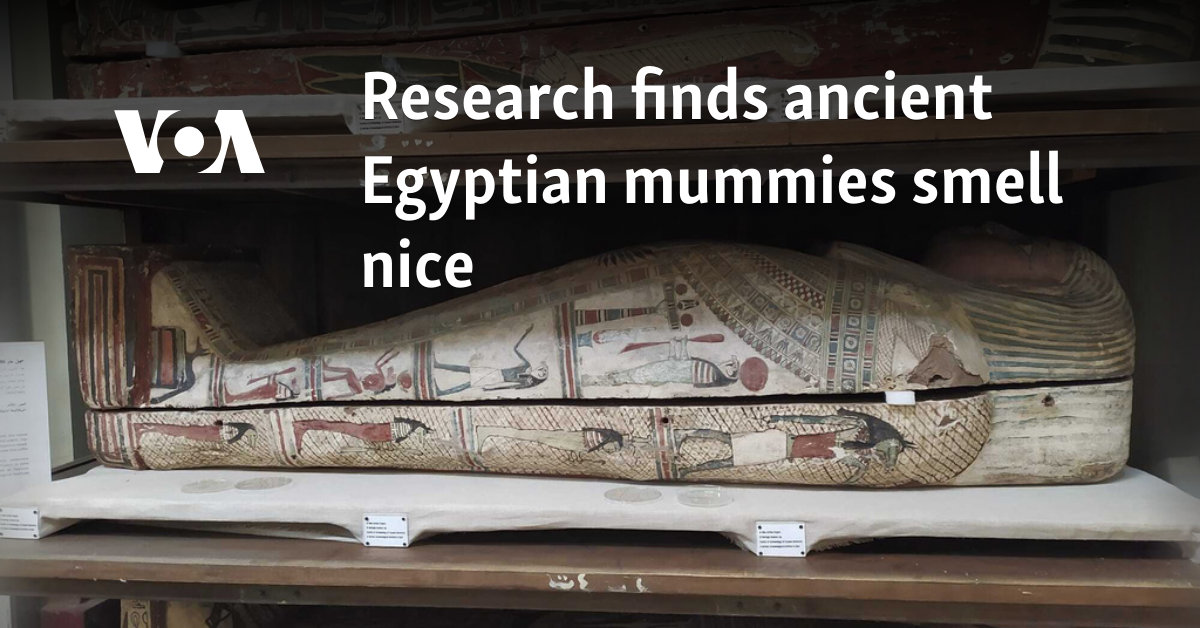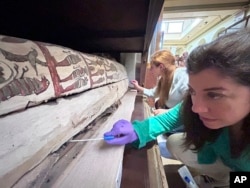At first, it seems replicated: smell the essence of an ancient corpse.
But researchers, who inspired their curiosity in the name of science, found that the well -protected Egyptian mummy really smells very good.
“In films and books, the terrible things are for those who smell mummified bodies,” said Cesilia Bembibre at the Institute for Sustainable Heritage of University College London London, London’s Institute for Sustainable Heritage. “We were surprised at the pleasures of them.”
“Woody,” “Spicy” and “Sweet” looked like tasting wine compared to mummy-sorrowing exercises. Floral notes were detected, which can be from pine and passionate resins that are used in emballing.
Study published on Thursday Journal of the American Chemical Society Both chemical analysis and a panel of human sniffers used to evaluate odors as older from nine mummies as old for 5000 years which was ether in storage or performance at the Egyptian museum in Cairo.
Researchers wanted to conduct a systematic study of the smell of mummies as it has long been a matter of attraction for the public and researchers, one of the authors of the report, Bambibre said. Archaeologists, historians, patrons and even narrative writers presented their work pages on this subject – for a good reason.
The fragrance of important thoughts in the mammification process that uses oil, wax and balm to preserve the body and its soul for afterlife. This practice was largely reserved for Pharaoh and nobility, and pleasant smells were associated with purity and debate, while bad smells were signs of corruption and decay.
Researchers at the University of Lajublajana in UCL and Slovenia, with samples of subjects of mummies, were able to measure whether archaeological commodities, pesticides or other products were used, or other products are used. Or microorganisms.
“We were quite concerned that we could find notes or indications from the decaying bodies, which was not the case,” said a chemistry professor at the University of Lajublajana, Matija Stralik. “We were particularly concerned that there could be signs of microbial decline, but it was not, which means that the museum is quite good in terms of environmental protection.”
To determine the state of protection without touching the mummies, using technical means to measure the air molecules emitted from the sarkofagi and determine the technical means “tells us to those probables who were from the social class A mummy and hence the mammary body A lot of information about which is not just. “We believe that this approach has the ability to have heavy interest for other types of museum collections.”
Barbara Hubber, a postdorle resierer at the Max Planck Institute of Geyantropology in Germany, who was not involved in the study, said the conclusions provide significant data on compounds that can preserve or degrade mummified residues. Information can be used for better protection of ancient bodies for future generations.
“However, research underlines an important challenge: the smells today do not necessarily have from the time of mummification,” Hubber said. “In thousands of years, evaporation, oxidation and even storage conditions have changed the original odor profile significantly.”
Hubber did a study two years ago, analyzing the remains from a jar with an analysis of an elite, which was revealed about the component, their origin and business routes. He then worked with an perfume, so that an exhibition in the Mosecard Museum in Denmark is known as the “fragrance of fragrance”.
Researchers of the present study expect something similar, using their findings to develop “odor” to create artificial re -creation.
“The museum is called white cubes, where you are motivated to read, to see, to do everything from away from your eyes,” Bembibre said. “Observing the mammated body through a glass case reduces experience because we do not get to smell the subject.”







Leave a Reply